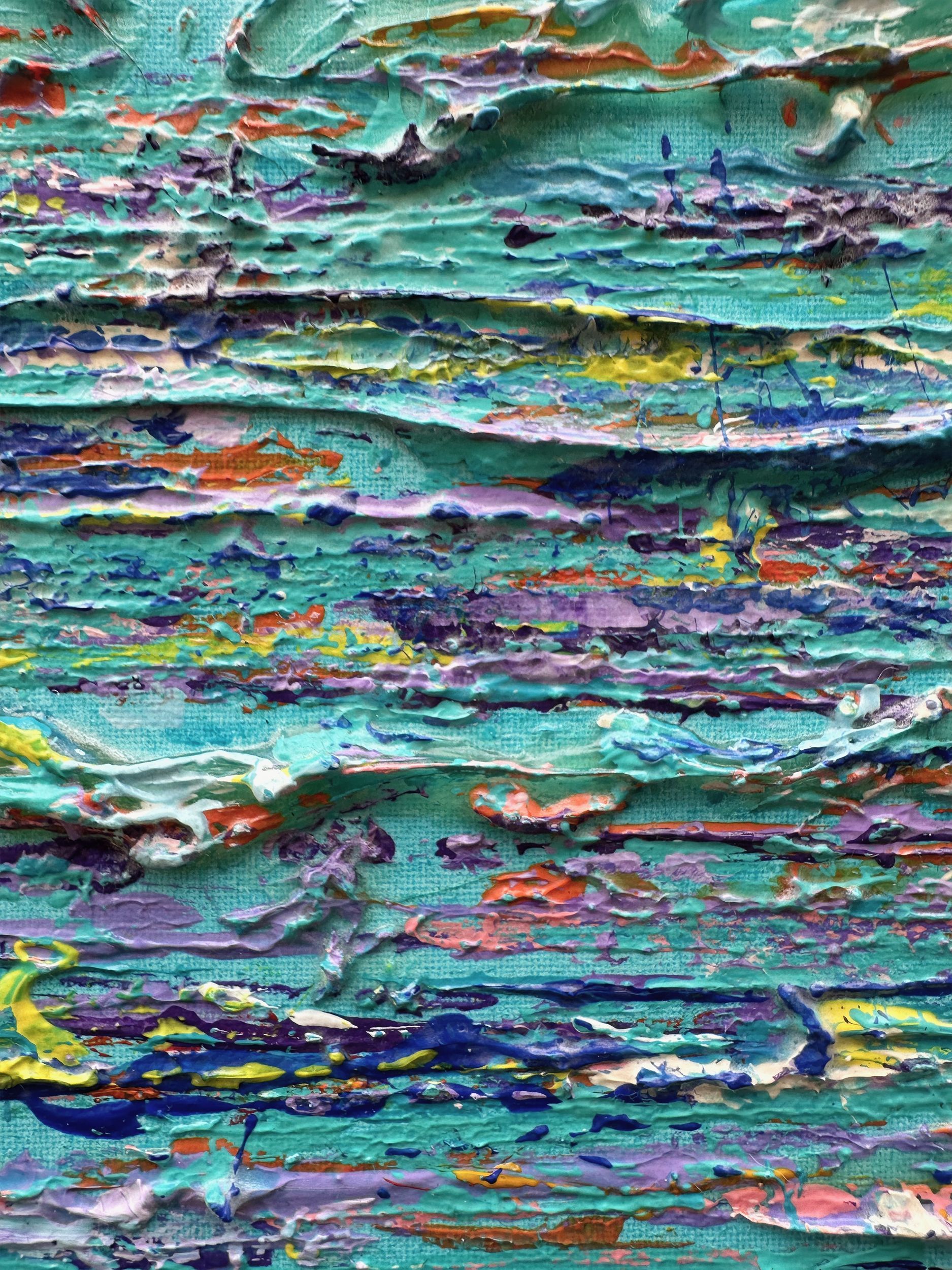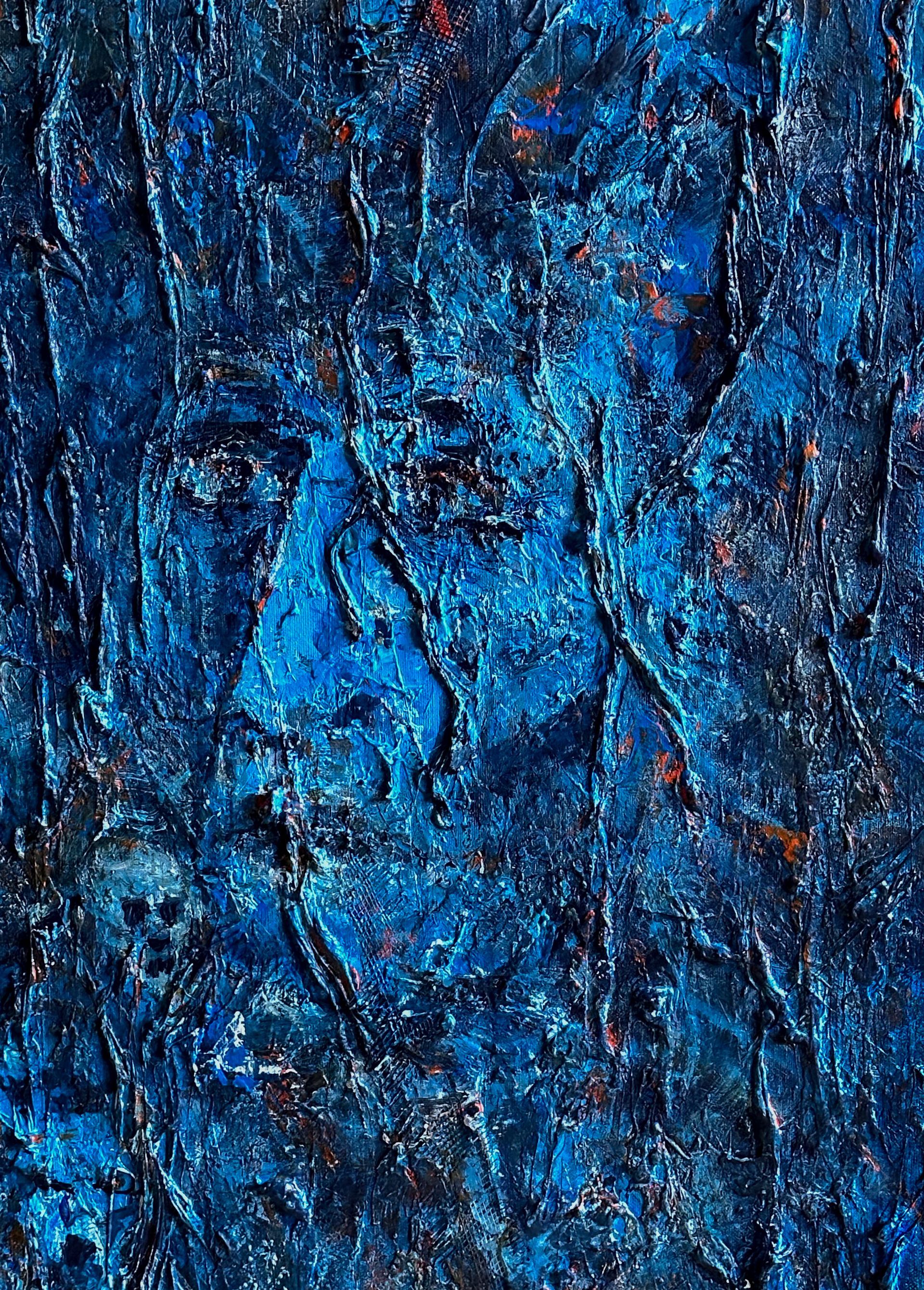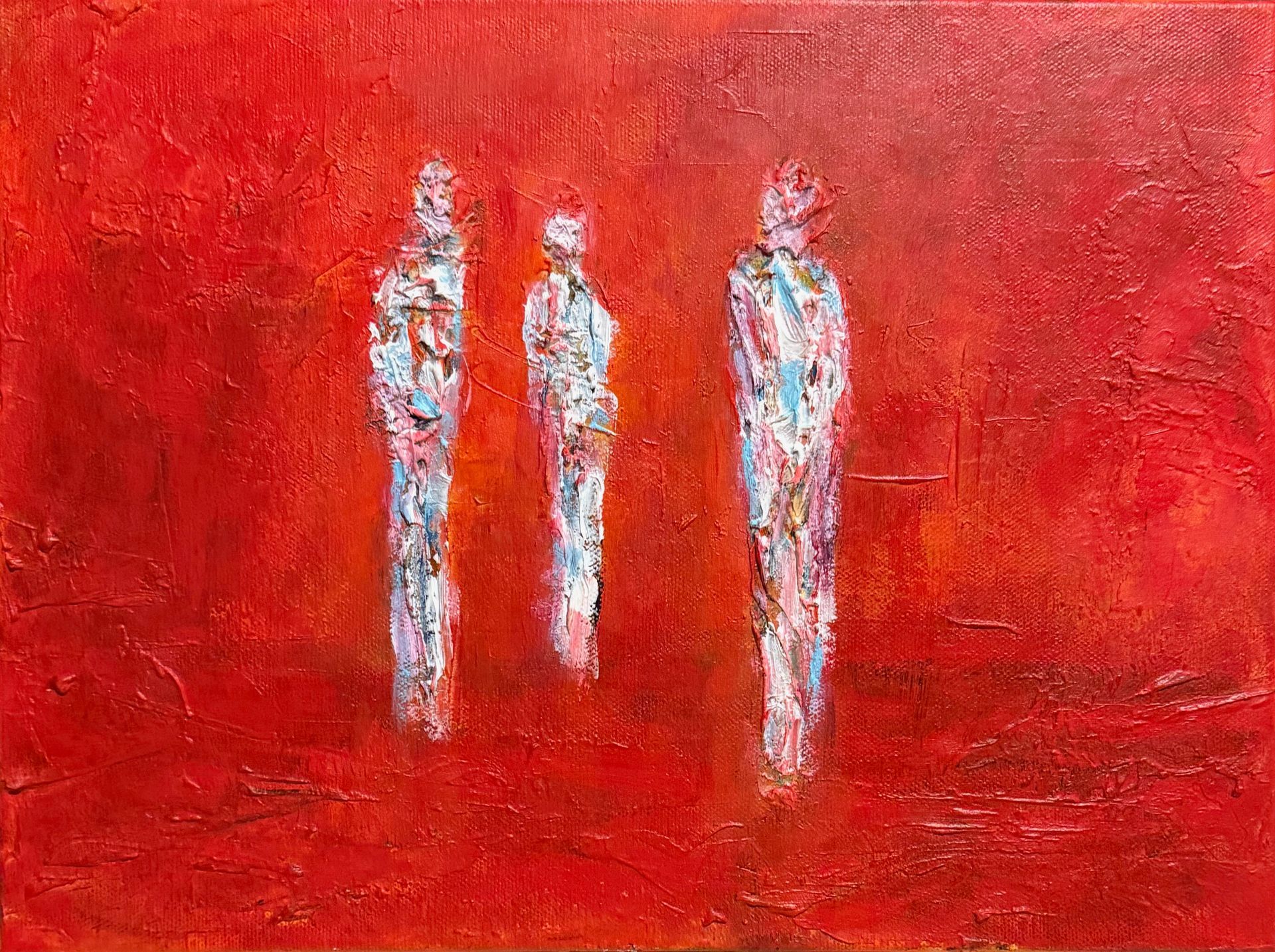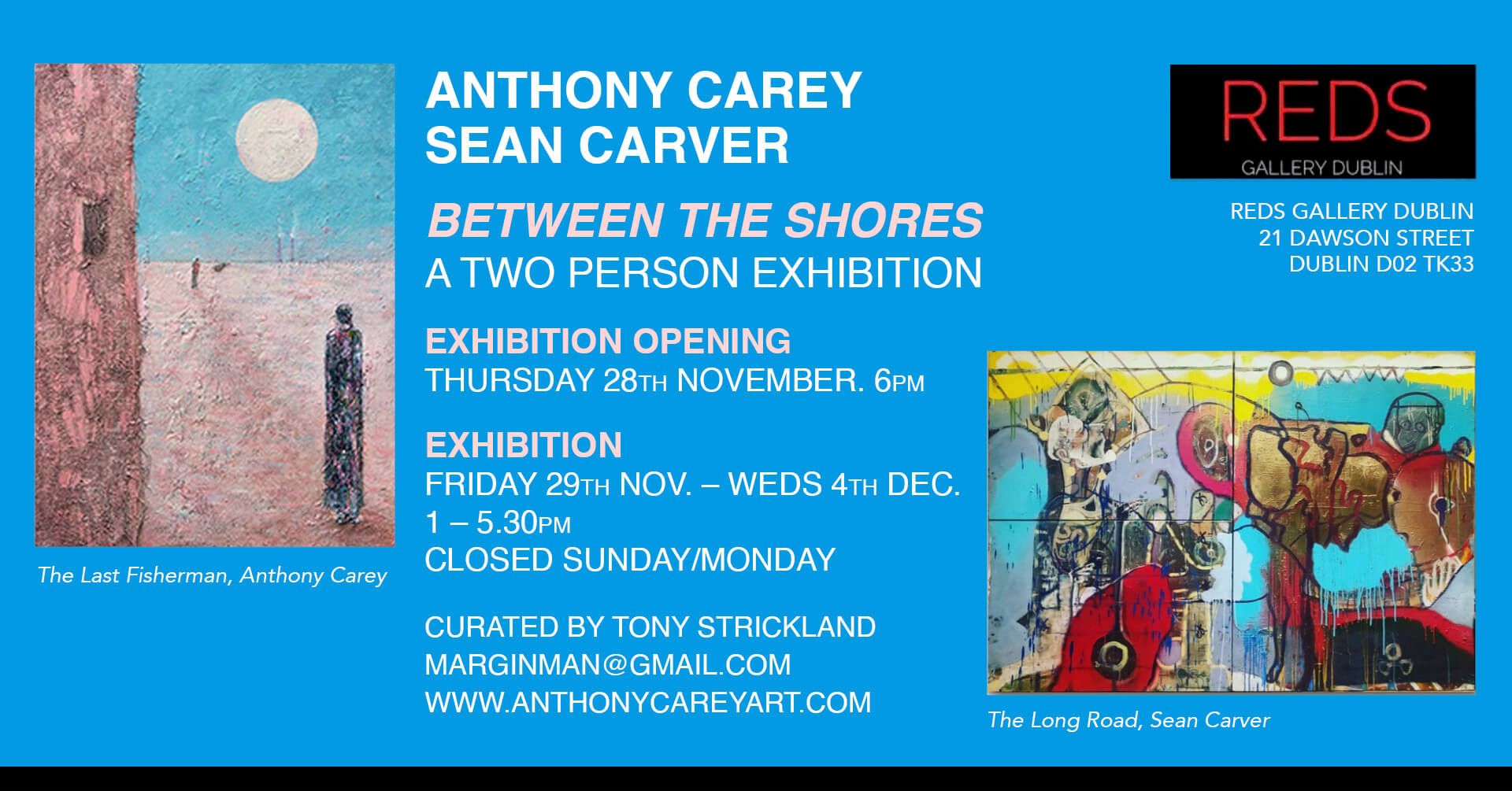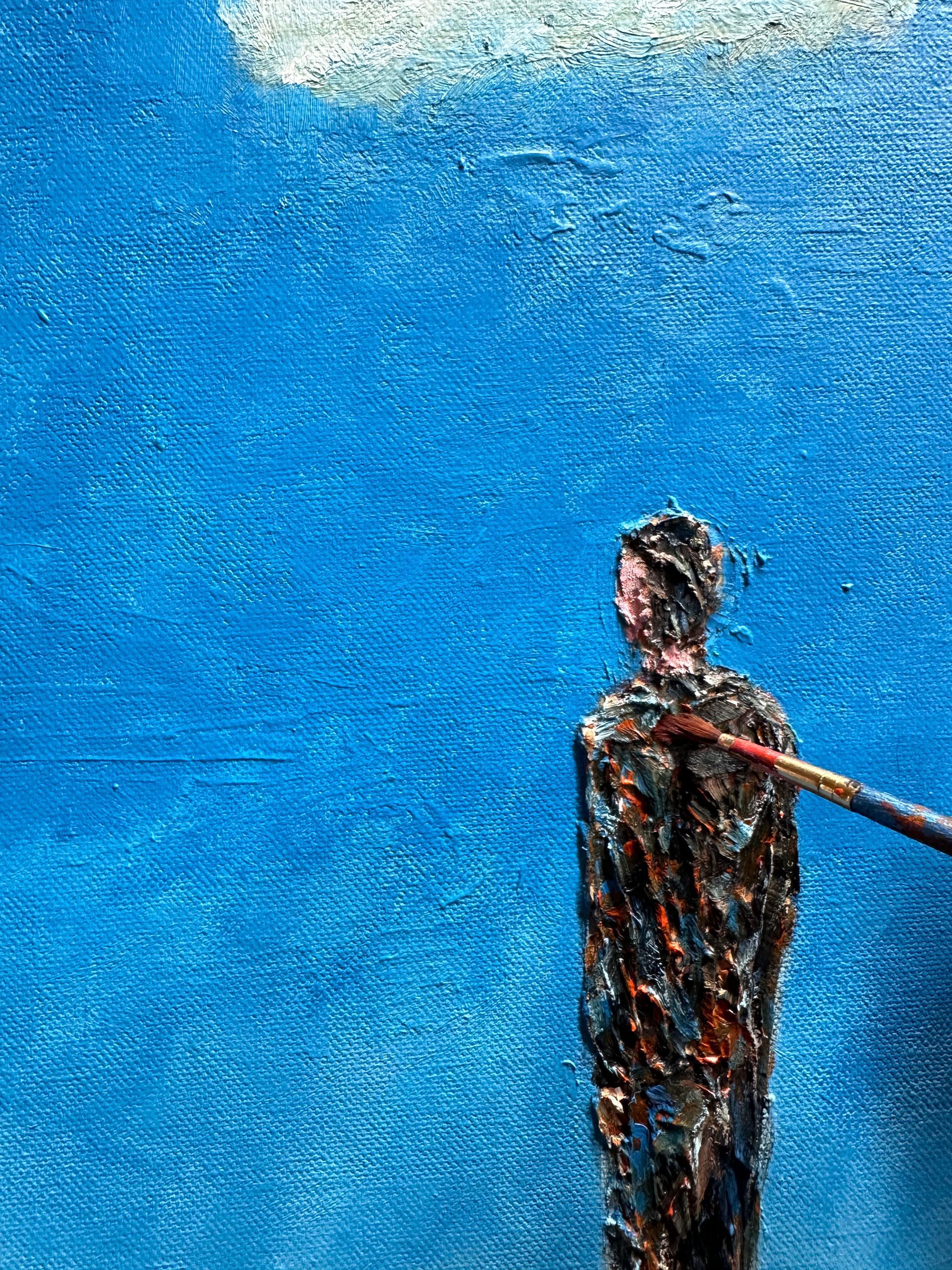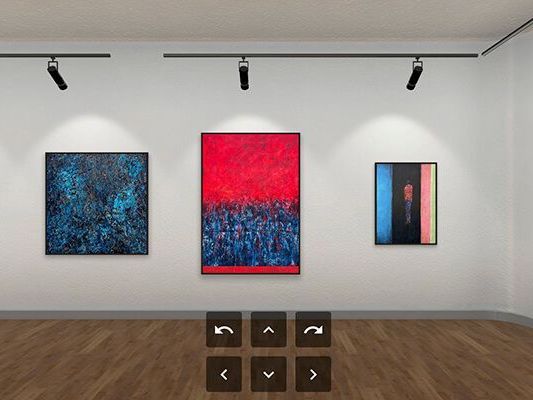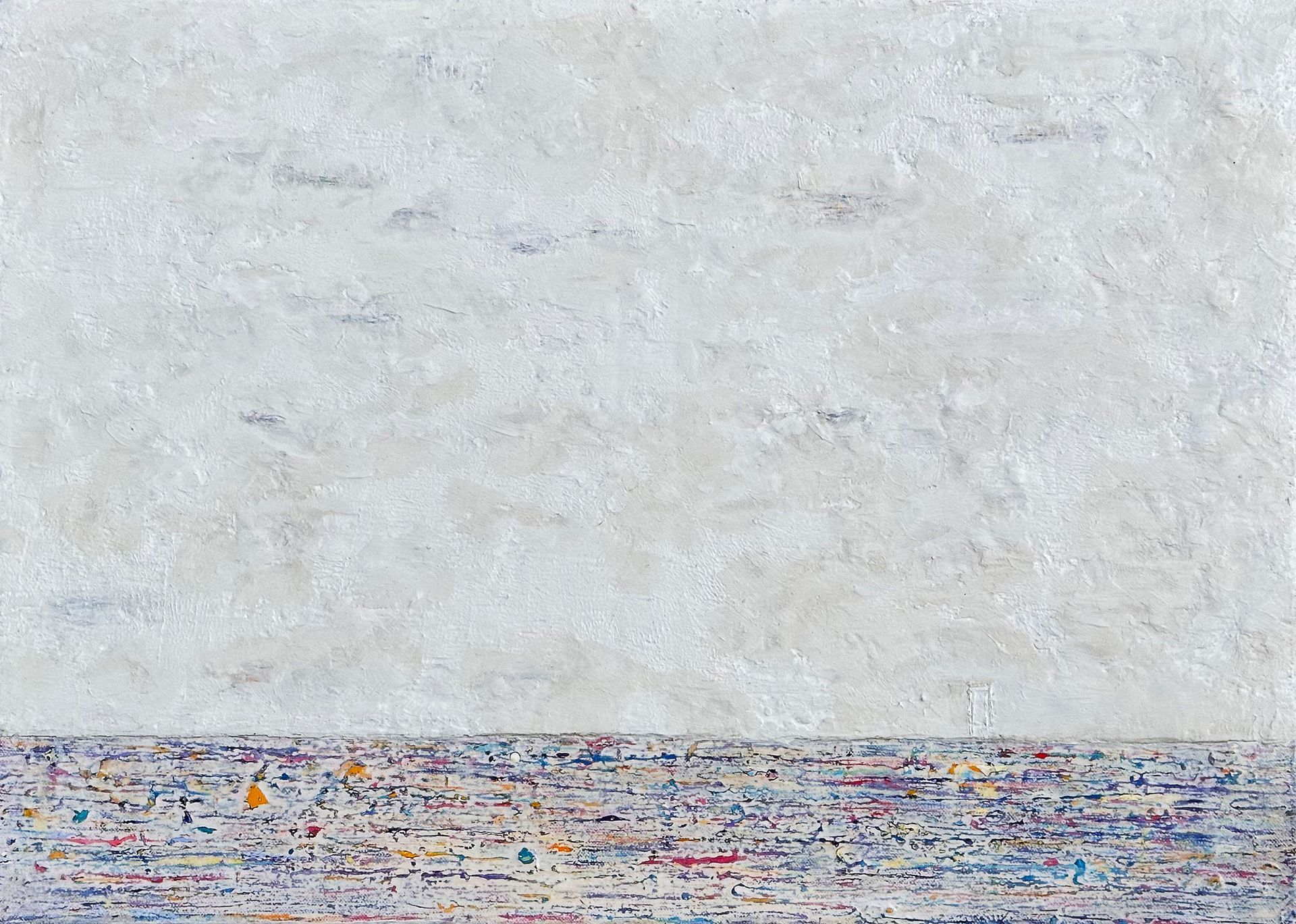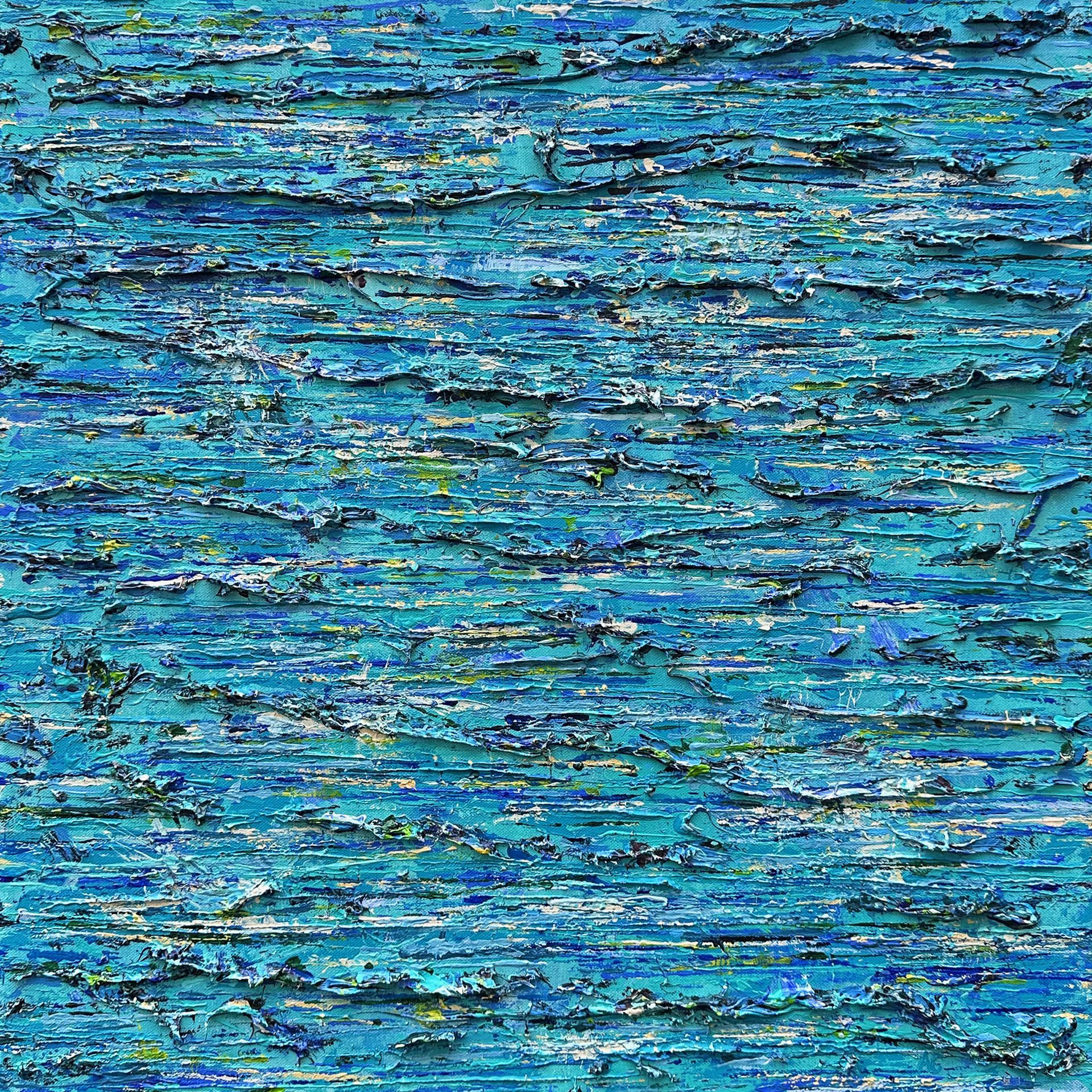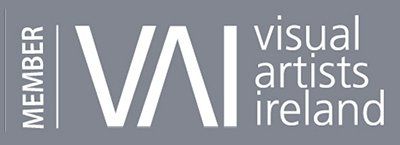Finding White Noise
A JOURNEY THROUGH GRIEF, ABSTRACT ART, AND THE PERSONAL UNCONSCIOUS
Grief is a landscape that defies maps. When I began to process my own losses, I found myself searching for meaning in the fragments left behind. It was during a college research project that I first encountered Carl Jung’s theories. His ideas about the unconscious and archetypes felt like a hand reaching across the void—offering a way to translate my personal pain into something universal.
Jung’s connection to artists, particularly abstract expressionists like Jackson Pollock, intrigued me. Pollock’s intuitive, physical approach to painting echoed Jung’s belief in tapping into the subconscious to uncover deeper truths. Inspired, I began exploring my own artistic process, finding that abstract art allowed me to express what words couldn’t.
The Birth of My Abstract Practice
I started creating textured abstract work, experimenting with mediums to add depth and complexity. My method was as much about destruction as creation. Using copper rods, I struck the canvas repeatedly, letting the force of the strokes both apply and remove paint. The result was a frenetic energy captured in layers—lines, marks, and textures that reflected the chaos of my emotions.
This process was entirely intuitive, guided by a stream of images flashing through my mind. These were not clear pictures but impressions, blurred moments from my life distilled into fragments of color. Memories of happiness would surface as I worked—bright, vivid hues that seemed to vibrate with their own energy. It was cathartic, a way of channeling overwhelming emotions into something tangible.
The rhythm of the process—the repetitive beating, the layering of paint, and the removal of it—became almost meditative. It created a kind of “white noise,” a space where the outside world fell away, leaving only the canvas and my internal landscape. This frenetic energy, paradoxically, brought me peace.
The Memory of Color
As I delved deeper into Jung’s theories, I began to see connections between my work and his ideas about the unconscious mind. Jung spoke of archetypes—universal symbols that reside in the collective unconscious, shaping our thoughts, dreams, and creativity. For me, color became an archetype of memory.
The bright yellows, rich reds, and deep blues in my work were not just pigments—they were portals to moments I had lived, feelings I had carried, and people I had loved. These colors held an emotional resonance that went beyond representation. They became a language, a way of capturing the intangible.
From Frenzy to White Noise
In the early stages of this practice, my work was frenetic, bursting with raw energy. But as I continued, I noticed a shift. The chaos began to find form. The marks and textures started to communicate with each other, creating a sense of harmony amidst the disorder. What began as a stream of unfiltered emotion became something calmer, more reflective.
This evolution reminded me of Jung’s concept of individuation—the process of integrating the conscious and unconscious parts of ourselves to achieve wholeness. My art mirrored this journey. What started as a chaotic expression of grief transformed into a space for reflection and connection. The white noise of my early works was no longer just a means of escape; it became a place where meaning could emerge.
Abstract Art as a Bridge
Jung believed that art could act as a bridge between the personal and the universal, and this has been true in my own journey. Abstract art allowed me to connect with my memories, but it also created a dialogue with others. Viewers often tell me how my work resonates with their own experiences of loss, resilience, and belonging. This shared connection is the most rewarding part of what I do.
Continuing the Conversation
Carl Jung’s theories continue to influence my art, shaping how I approach texture, color, and form. His belief in the power of the unconscious mind has given me a framework to explore my own experiences while connecting with others on a deeper level.
If you’d like to see how these ideas manifest in my work, visit my Selected Works gallery.
Sign up for my Textures of Life blog to explore more stories about the inspiration behind my art and my creative process.

